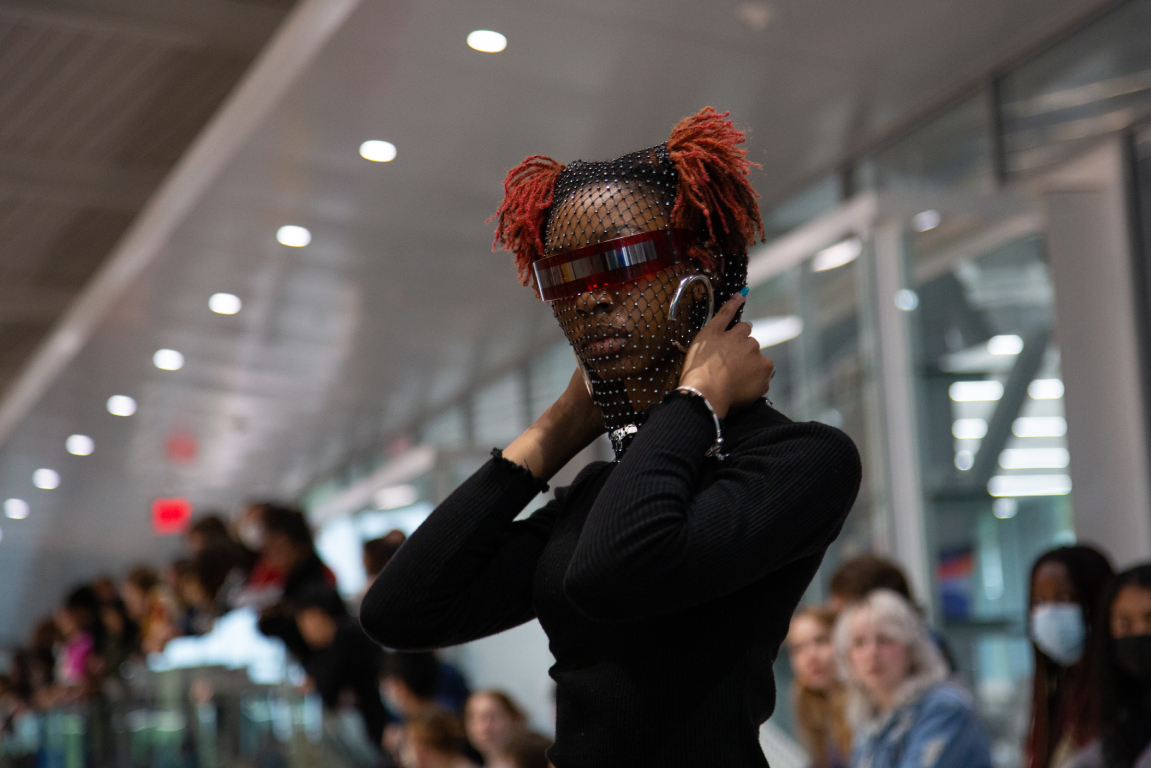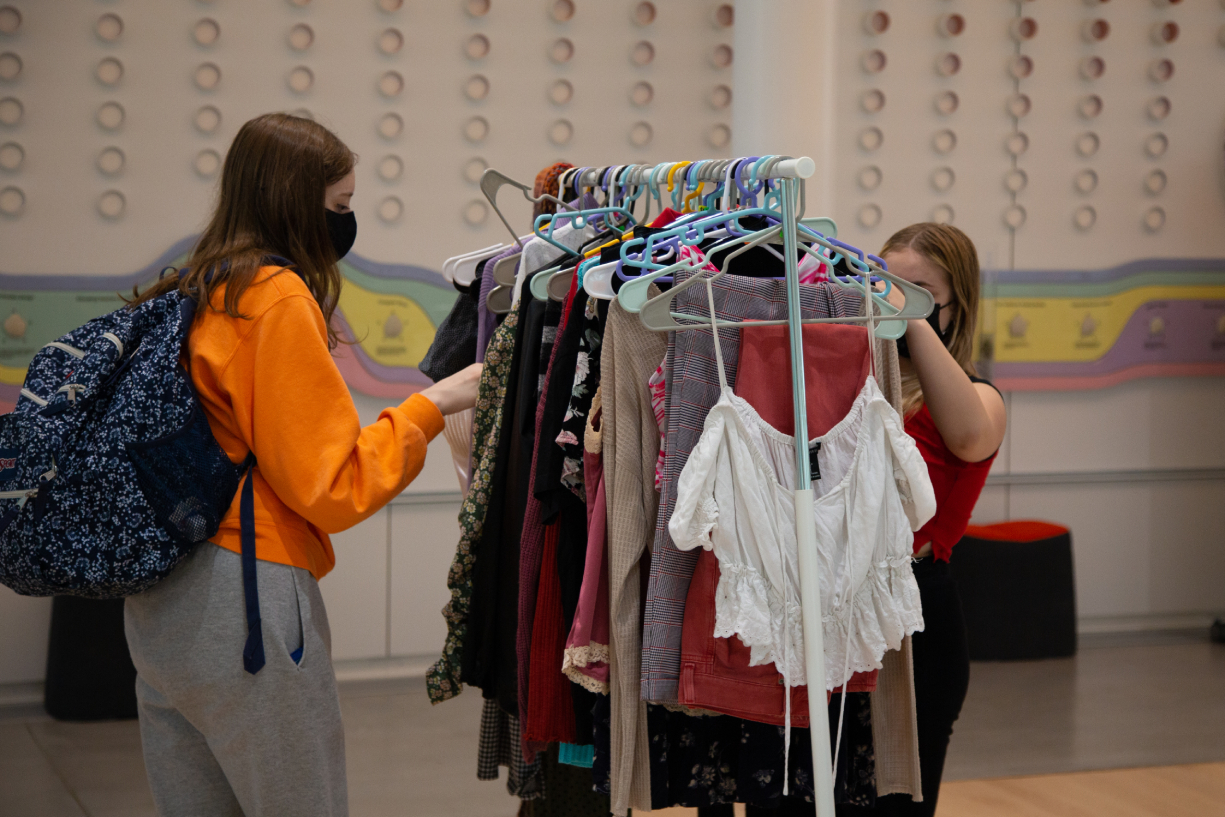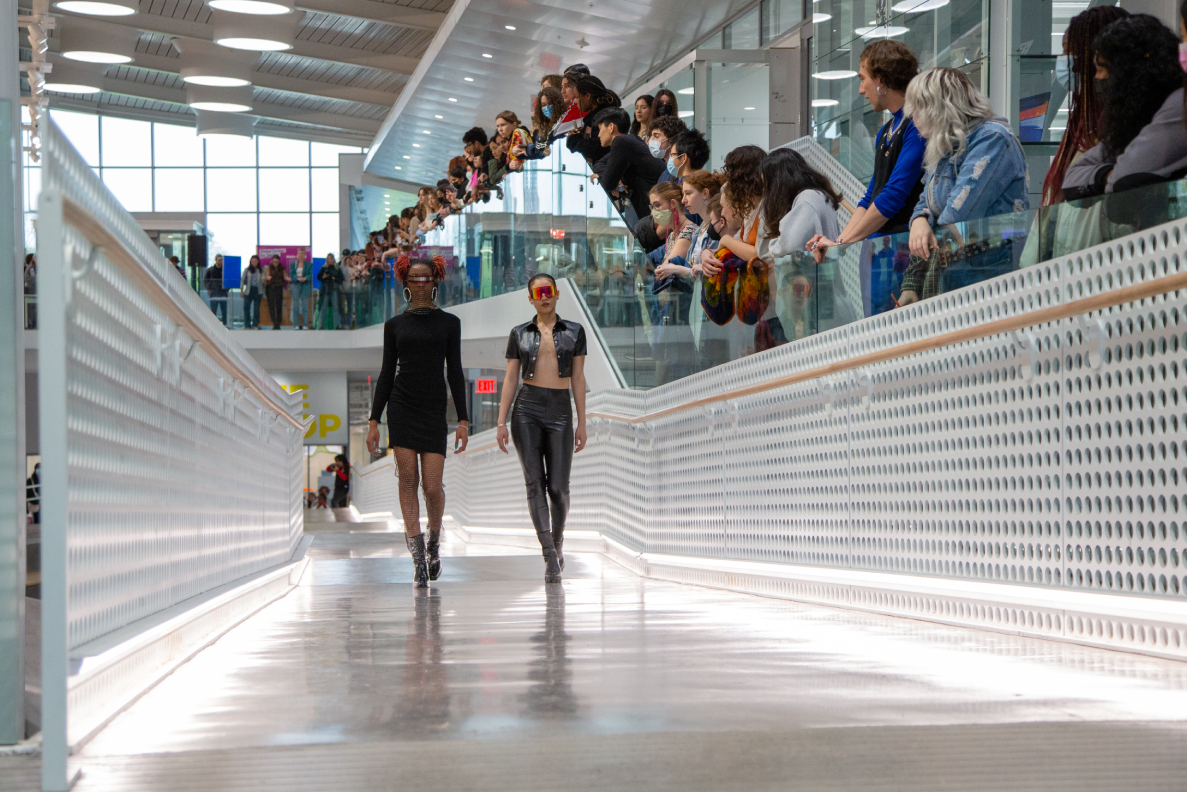This weekend, the Circular Fashion Expo will take place at the Siebel Center for Design at the University of Illinois. The Expo was founded by U of I student Joshua Jay James (known as J³, or J-cubed) in collaboration with The Fashion Network student organization. The Expo’s mission is to re-circulate fashion waste away from landfill and back into the local economy.
This year’s Expo builds on previous ones, and will include a fashion show, vendors, a clothing swap, live music, and workshops that can help you mend your clothing.
The Circular Fashion Expo is from 11 a.m. to 8 p.m. on Saturday, October 29th; it’s free to enter, but bring some spending money for all the incredible vendors. I recently spoke with Joshua Jay James about this weekend’s event. You can learn more in our interview below, and on the Expo’s website.

Photo by Brielle Henderson.
Smile Politely: What is the Circular Fashion Expo? Who is organizing it?
Josh Jay James: The Circular Fashion Expo, the premiere student-run fashion-focused event at the University of Illinois, exists to inspire a community of circularity and innovation in fashion for students.
SP: Who is the target audience? Can anyone of any age and size participate in the Expo, including the clothing swap?
James: Yes! We encourage all people interested in fashion to visit the Expo. There’s something for everyone.
Our target audience is the new generation of fashion futurists: Gen Z’ers who are ready to make their wardrobes and fashion consumption circular by adopting the systems necessary to keep their garments out of landfill.
SP: I see on your website that the day includes a clothing swap. How does that work?
James: The Clothing Swap is an experiment that we’re running to pilot the app we created for the event, [which is] aimed at increasing the efficiency and velocity of garment exchange between people.
In collaboration with faculty in the College of Business and College of Media, we’re hoping to create the world’s first truly circular business model using alternative currency and social commerce. Visitors can bring clothes they would otherwise donate and earn tokens by adding them to the Swap. They can then spend tokens to purchase other donated items within the Swap. We hope to scale this technology for the next Expo in the Spring to power the entire Expo, and eventually to other universities and fashion events around the country.

Photo by Briella Henderson.
SP: In what condition should clothing donations be for the swap?
James: We’re working on building funnels so all garments are sent to the right home or recycling system. We accept garments of any condition (except kids clothes).
SP: What happens to all the donated clothes?
James: Some are purchased at the event. Some are kept in our virtual system and traded later using our app to drive revenue for our organization. Others are sent to student upcyclers on campus for repurposing. And, for the garments that can’t be easily sold or upcycled, our organization is developing a robust system that ensures any garment finds its appropriate future. No garment is left behind.
SP: How does the Expo account for inclusivity — or the lack thereof — in fashion?
James: The Expo is proud to be a platform for inclusive initiatives in fashion. Some projects we’re supporting this year include Faaslahpal, a Muslim-American community that’s bridging the cultural gap, beginning with their Scrunchie Hijab product, and Equability, a company that makes garments accessible by installing magnet and velcro closures for ease of access, among others. The event offers affordable clothes in a range of sizes and styles so nobody is left behind in the future we’re creating — anybody can be a fashion futurist!
SP: Can you tell me a little more about the workshops?
James: The one-on-one workshops are a feature offered by the student Enactus project, Phoenix, designed to teach students the basic upcycling skill sets necessary to mend, patch, and repair their garments to extend their lifetime.
SP: How can someone sign up for the workshop?
James: Workshops are first come, first served at the event. No sign-up necessary.
SP: What do you hope people take away (literally, theoretically, ideologically) from the Circular Fashion Expo?
James: I hope that people leave the Expo inspired to explore new means of circularizing the fashion economy in innovative ways, empowered to take the steps necessary to be more creative and sustainable with their wardrobes, and enlightened by the endless possibility the word of fashion holds. And, of course, I hope they leave with a new outfit, too!
SP: As a potential visitor, what do I need to know about attending?
James: Come ready to swap and shop! Bring donations if you have clothes that you no longer wear to earn some tokens. All vendors are student small businesses — they appreciate any and all support. And, of course, the true spectacle is the runway that starts at 6 p.m. You don’t want to miss it!
Circular Fashion Expo
Siebel Center for Design
1208 S 4th Street
Champaign
11 a.m. to 8 p.m.
Free








